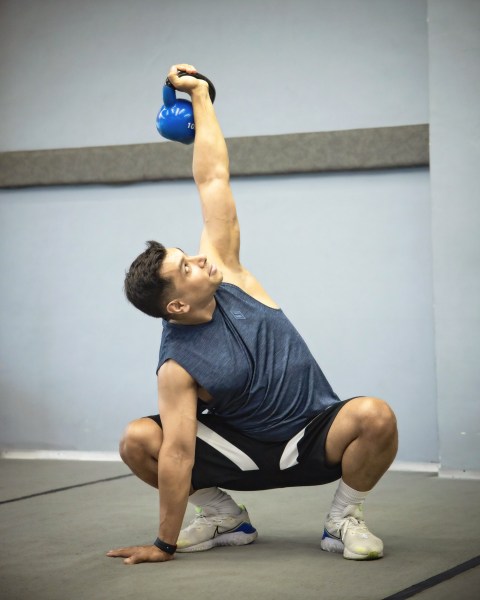When actor and comedy show host Kapil Sharma was seen running at top speed in a video online, everybody thought his transformation was probably because of weight loss drugs. But Sharma has been losing weight steadily over the years, and though he looks chiselled up now, the groundwork for it had been laid by fitness expert Yogesh Bhateja. “Be it celebrities or ordinary people, anyone can get off the weight cliff with a plan that’s doable and more importantly sustainable over a long term,” he tells us.
One of the things that Bhateja noticed in his 18-year journey as a fitness expert was that Indians were averse to extreme exercise and diet plans and gave them up midway even if they had begun with good intentions. “If you want to correct everything about yourself at one go with something that you have never been used to, no weight loss plan can take off,” he says.
That’s when he devised the “21-21-21” formula, which involves 21 days of movement, 21 days of smart diet tweaks and 21 days of mindfulness. This ensured that people, including Kapil Sharma, could lose weight without extreme diets or workouts. Excerpts:
Story continues below this ad
 The groundwork for Kapil Sharma’s weight loss had been laid by fitness expert Yogesh Bhateja.
The groundwork for Kapil Sharma’s weight loss had been laid by fitness expert Yogesh Bhateja.
What is the 21/21/21 formula all about?
It is a graded plan that not only transitions you to an improved lifestyle but makes it a new normal in your life. For the first three weeks, I focus on what the subjects do to move their body. This could be walking, range of motion exercises, stretching, old-school PT exercises, stretches, jumping jacks, even housework. I just make them focus on their intensity, frequency, efficiency and repetitions. At this stage, there’s no need to skip your favourite foods or give up habits like smoking but to get you into a fitness rhythm that’s both doable and enjoyable.
The next 21 days are about diet tweaks, which are easier to keep to because your body has now settled into a rhythm of exercise. You don’t want to ruin the little gains made. My diet stays close to what the person eats in a day and relies on smart substitutions. I just shuffle a few things around. So wheat roti becomes ragi roti. I ask people to drink milk in the morning instead of bedtime to reduce acidity. I set the time and portion for which sweets or snacks they can have rather than cutting them out completely. Now that 42 days of exercising and eating right have been normalised, the final step involves the last 21 days, which is focussed on eliminating dependencies like caffeine, alcohol and nicotine. By now your body and gut are feeling better, it becomes easier for you to give up addictions. The idea is to give up anything that’s not working for your body but is just giving you emotional support.
After 63 days, all your parameters would have improved by 35 per cent. The graded plan is similar to acclimatising your body to a new routine.
Can anybody follow this plan?
Anyone can do this. Till date, I have not lost clients as the drill is based on practical logic and a thorough evaluation of their individual medical conditions.
Story continues below this ad
What are the common diet mistakes people make?
In all talk about the need to up our protein, we are ignoring the heart of the gut-brain axis, the wellbeing of which keeps us disease-free — fibre. It gives a good bounce to the process of eliminating toxins, supports good gut bacteria, doesn’t overburden the liver with protein or trigger gas and bloating, slows down gastric emptying and regulates blood sugar and energy. Truth is you can get enough protein if you are into animal foods but may have to mix plant proteins to get all nine essential amino acids. But to meet your daily quota of 28 g fibre, you need to include it in every meal. That’s why we say half a plate of vegetables and fruits as in-between meals.
 One of the things that Bhateja noticed in his 18-year journey as a fitness expert was that Indians were averse to extreme exercise and diet plans and gave them up midway.
One of the things that Bhateja noticed in his 18-year journey as a fitness expert was that Indians were averse to extreme exercise and diet plans and gave them up midway.
The other thing I insist upon is to eat seasonal fruits and vegetables. The watermelon may be available all year round thanks to advanced preservation technologies but won’t have the same effect in winter as it would in summer. The activity of fruit enzymes can be influenced by temperature and the fruit’s ripeness. Fruits harvested at their peak ripeness during the natural growing season contain a wider range of nutrients and phytochemicals, including enzymes.
But the biggest food mistake has got to be relying on delivery apps. You crave for jalebi, order it in 20 seconds, within 30 minutes, it is at your door, in another 20 minutes, it is in your stomach. Within 51 mins the food you wanted is in your stomach. This instant gratification is building addictive behaviour and a calorie overload. Imagine if you had to get ingredients and prepare jalebis or even get them from a shop, you would eat them mindfully. Make slow food a part of your process.
What are the worst fast foods to have?
Tomato ketchup is the worst. It is high sugar, high sodium and a chemical cocktail of preservatives, flavouring agents and additives. All noodle mixes and even pricey chocolates have palm oil.
Story continues below this ad
Do we really need supplements?
In these times, when you are not eating right and food quality is questionable, you need them. But always get a blood work done for deficiencies and follow medical advice for supplements. The biggest reason for supplementation is your fruits and vegetables, which may not have the minerals they are supposed to because the soil they grow in is itself depleted of them. Sometimes vegetables are grown with pesticides and the chemicals leach into the food, affecting their nutrient density and affecting your gut lining.
So you may not get your micronutrients, like Vitamin E, Vitamin D and Vitamin B12, from your food. With talk about lactose intolerance, we have stopped having dahi. We need prebiotics and probiotics, particularly after a bout of illness to grow and feed friendly gut bacteria. The elderly may need isabgol supplements to push food waste out of their bodies, the working professional may need vitamin D3 as their bone density goes down with prolonged hours of sitting or standing.
What’s the biggest mistake we make while planning a low-calorie diet?
Every low calorie diet may not be meant for you. I prefer a diet based on your Basal Metabolic Rate (BMR), the number of calories your body needs at rest to perform basic functions. Then correlate it with your total daily energy expenditure (TDEE) by factoring in your activity level. Then adjust your calorie intake based on your weight goals.
What’s the best sleep hygiene?
While we talk about digital detox, I follow a brain emptying technique which is guaranteed to make you fall asleep. List out the day’s negatives, find out what could be the solution to negate them and set a positive gameplan to do so the next day.

